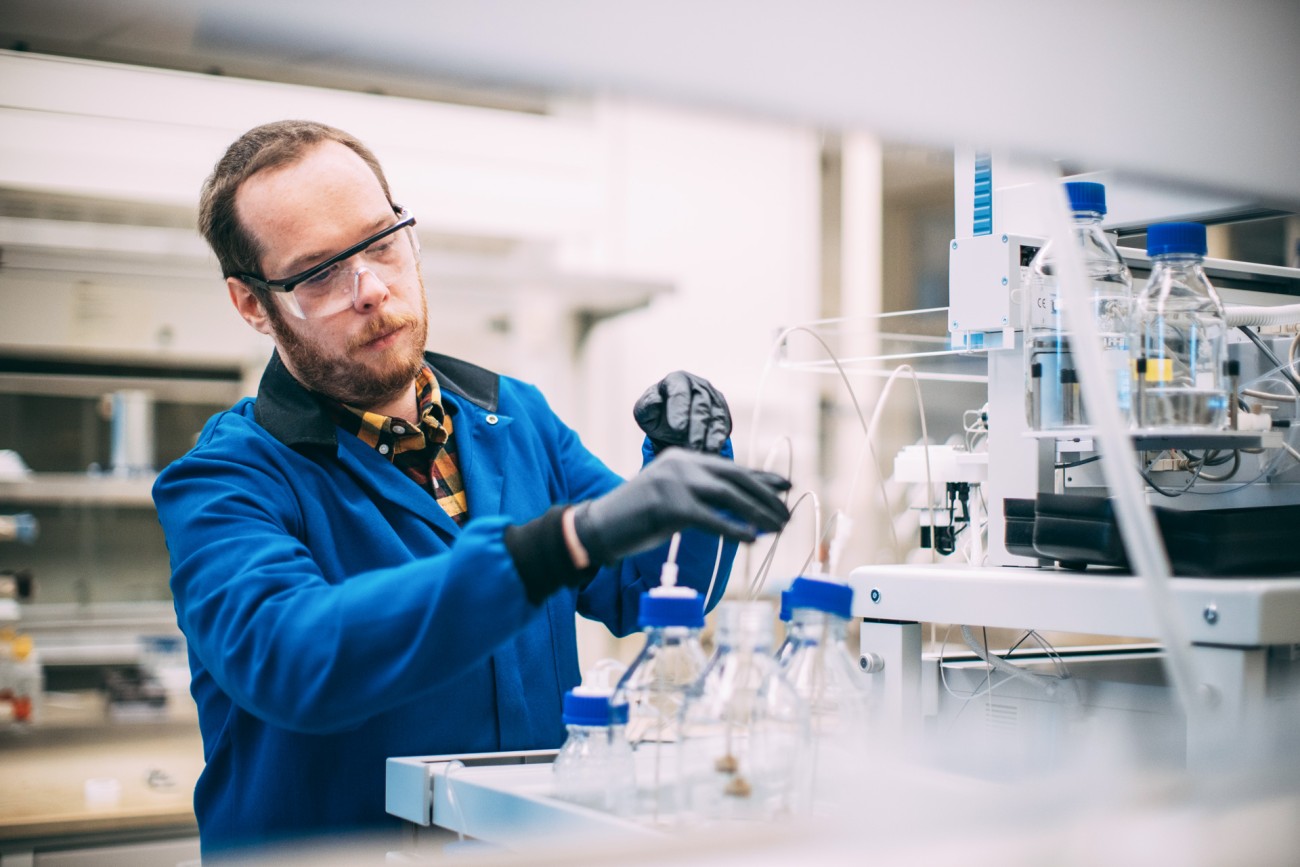
Cyclodextrins can be used to filter out even the tiniest amounts of contaminant from drinking water.
May 14, 2020 Read time: approx. MinutesMinute
CLEANER WATER WITH SUGAR RINGS
A surprisingly modest raw material, cyclodextrin from cornstarch helps to filter out nanoscale levels of hazardous per- and polyfluorinated alkyl substances and other micropollutants from drinking water. Supported by WACKER, the US company Cyclopure, has developed this technology and is now moving it into commercial uses.
The lemon-yellow powder looks good enough to eat. Yet the main ingredient, cyclodextrins from WACKER, are odorless and tasteless. And despite its delicious appearance, the yellow-colored material has been produced not to satisfy hunger, but rather thirst. And only indirectly. Illinois-based company Cyclopure connects beta-cyclodextrins from WACKER with rigid crosslinking monomers to produce a powerful water-purifying and health-saving adsorbent that removes micropollutants – nanoscale traces of chemicals, pharmaceuticals and pesticides – from drinking water.
Per- and polyfluorinated alkyl substances (PFAS), a highly toxic type of micropollutant, have emerged as an urgent global health concern. Comprised of thousands of compounds, including PFOA, PFOS and GenX, the chemicals have made their way into groundwater from a wide range of industry applications such as firefighting foam, packaging, textiles and non-stick pans. Moreover, the chemicals have been detected in the air, soil, plants, humans, wildlife and aquatic environments.
What makes PFAS hazardous is that, once ingested, they accumulate in the body with a long half-life period of several years. These “forever chemicals” have already been linked to high blood pressure, thyroid disease, liver damage, and kidney cancer, and can endanger a developing fetus during pregnancy.
“There is growing evidence that even very low levels of PFAS are harmful to health,” says Mark Harrison, WACKER’s Us-based Global Business Development Manager for cyclodextrins. “Government environmental agencies are taking ever-stronger measures to prevent chronic exposure to PFAS in populations.”
Incredibly, cyclodextrins, a modest raw material derived from cornstarch, form the basis for a new material that effectively filters out nanoscale (below 5 ppt) amounts of PFAS and micropollutants from drinking water. To produce the adsorbent, scientists at Cyclopure rely on beta-cyclodextrins (β-cyclodextrins) from WACKER.
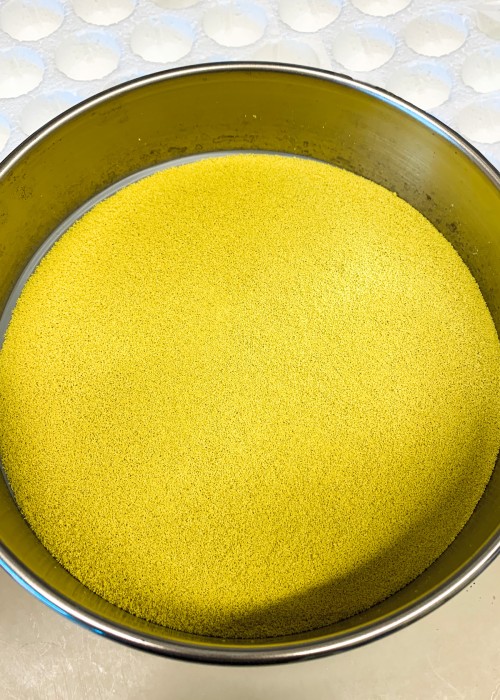
120,000 vertically stacked cyclodextrin cups equal the thickness of a piece of paper.
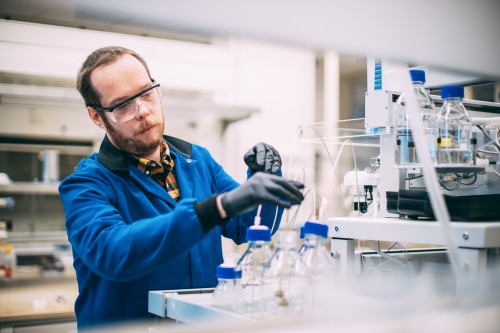
Scientists at Cyclopure are using beta-cyclodextrins from WACKER to filter out part-per-trillion levels of chemicals, pharmaceuticals and pesticides from water.
First-Ever Application
Mark Harrison knows cyclodextrins inside out – how the orientation of the glucose units in the ring-shaped molecules makes the interior cavity hydrophobic (repels water), while the molecule’s exterior is hydrophilic (affinity for water).
So, when he spotted a 2016 Nature feature story on the work of Cornell University researcher Will Dichtel titled “Rapid removal of organic micropollutants from water by a porous β-cyclodextrin polymer,” Harrison was electrified.
“You don’t see cyclodextrins on a magazine cover very often,” he says. But the WACKER manager knew that beta-cyclodextrin, seven-unit glucose molecules, had never been used commercially for water treatment – and he immediately recognized the potential.
Cyclodextrins are cost-effective, and come from a plant-based renewable resource: cornstarch. “Beta-cyclodextrin is a great adsorbent, and sustainably made at industrial scale,” says Harrison. “Explained simply, when you put β-cyclodextrin into water, the water molecules in the hydrophobic cavity want to get out. Other hydrophobic molecules, for example, chemical compounds, happily take the place of the water molecules in cyclodextrin’s cavity.”
From Corn to Adsorbent Polymer
Starting with liquid cornstarch and then adding enzymes, WACKER employs a biotechnical reaction to produce β-cyclodextrin powder. The material then goes to Cyclopure for further processing. Cassou explained that “in the lab, we connect the cyclodextrins to one another with rigid aromatic linkers. This forms a network of trillions of tiny pores, the small, uniform-sized cyclodextrin cavities.”
The scientists also add catalysts and monomers that allow them to target specific micropollutant compounds, and which give the powder its yellow or white hue. The resulting material is a crosslinked mesoporous, high-surface-area β-cyclodextrin polymer that attracts and holds onto guest molecules in the cyclodextrin’s cavities. Microtoxins can check in any time they like, but they can never leave.
But glucose is sugar, and sugar dissolves in water – doesn’t it? Although oligosaccharides normally dissolve in liquid, combining the β-cyclodextrin rings within a crosslinked network of rigid bonds makes them insoluble in water.
This is Cyclopure’s breakthrough technology, the one that moved Harrison at WACKER to action. The ensuing relationship has benefited both sides. “Since Cyclopure’s early days, WACKER has been a reliable local supplier, but with a global reach,” says Harrison. WACKER has supported Cyclopure and learned from the young company. He added that
“Working with Cyclopure and their adsorbents has provided us with additional insights into the use of cyclodextrins.”
Mark Harrison, Global Business Development Manager for cyclodextrins
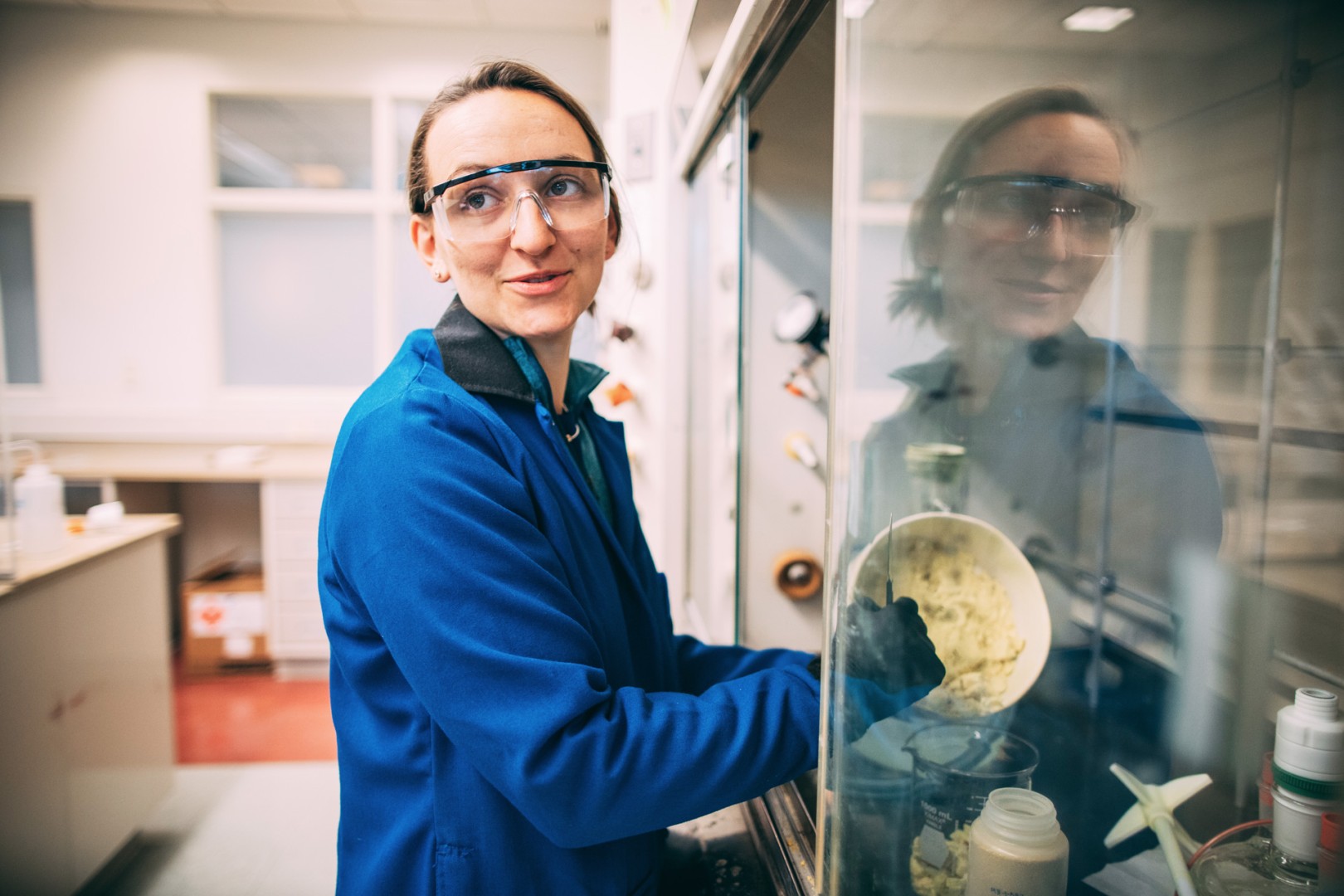
Cyclopure scientists use cyclodextrins for water treatment, by converting them into insoluble, mesoporous powder and granular adsorbents.
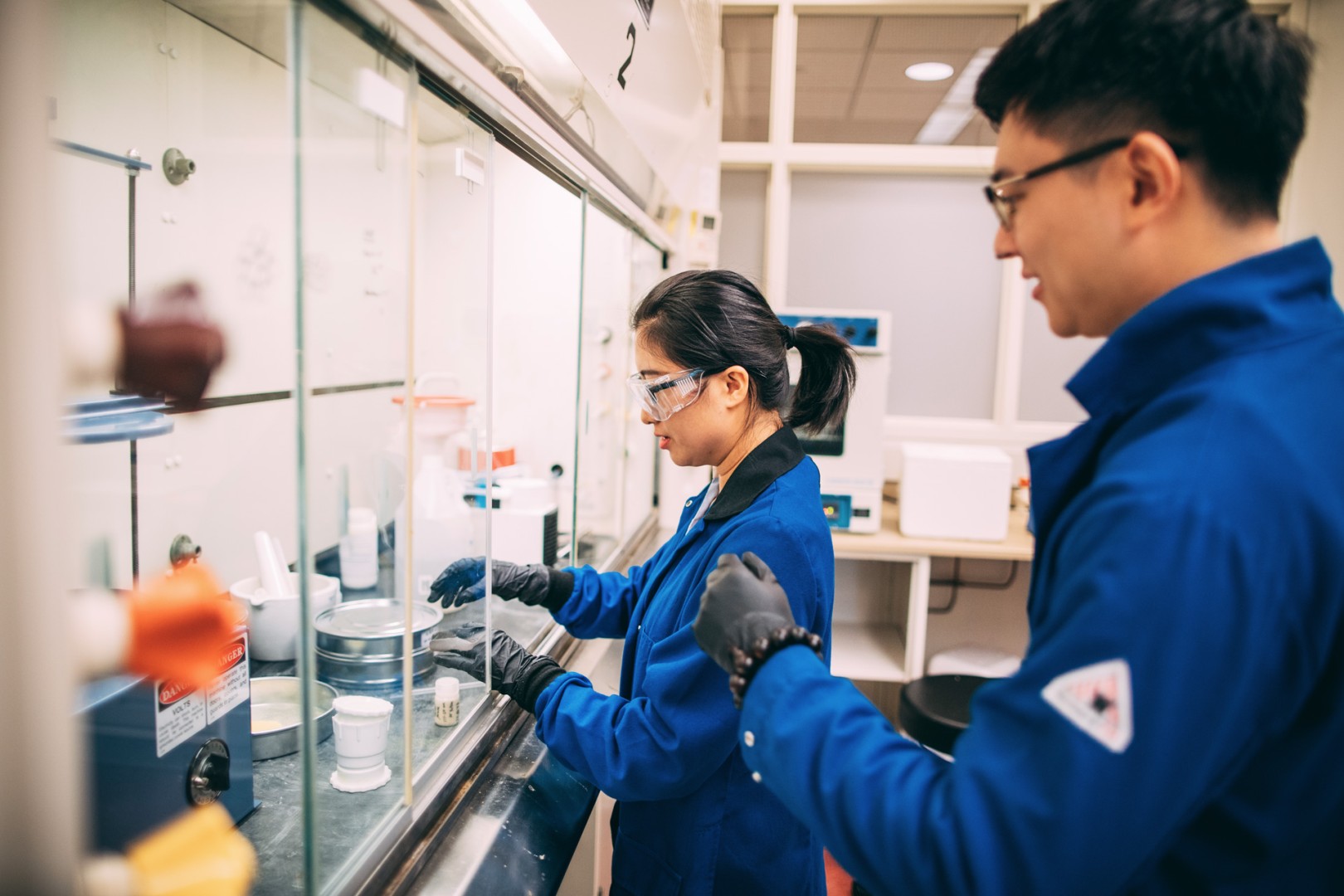
Using tools of molecular design, Cyclopure chemists are able to tailor cyclodextrins to target specific classes of micropollutants such as PFAS.
Fast, Easy, Effective Adsorption
Although the danger posed by PFAS isn’t entirely new, what has changed is that powerful tools such as mass spectrometry can detect the chemicals at part-per-trillion concentrations. Such a precise analytical tool was not available earlier. “For perspective, one part per trillion is one drop in 10 million gallons, or 3.78 million liters,” the Cyclopure CEO says.
“Advanced instrument technology allows us to quantify the micropollutants. They show that chemicals at these concentrations are far more pervasive than previously known; they are not being removed by conventional water treatment using activated carbon.”
Activated carbon, commonly made from charred, finely ground coconut shells, has a large surface with uneven pore structures. This structure traps larger pollutants, typically natural organic matter – large-molecular-weight compounds formed by decaying plant and animal matter. But like in a game of musical chairs, when these bigger molecules secure their seats, no pores are left for smaller micropollutants. And when the pore sites fill up, the carbon adsorbent stops working.
Saturated activated carbon typically is sent to landfill or is incinerated. Only under extremely high temperatures (typically greater than 900 °C) can spent granular activated carbon be regenerated. This translates into an urgent need for a faster and more effective way to remove micropollutants from water. “Our beta-cyclodextrins from WACKER are 0.78 nanometers,” says Cyclopure’s CEO. “This is an ideal size for capturing micropollutants like PFAS.”
The adsorbent network of tiny pores allows water to pass through, but size exclusion blocks larger molecules from settling in. It also helps explain why the cyclodextrin polymer PFAS adsorption rates are so fast, reaching 90-percent removal in as little as five minutes. An additional boost for the environment is that the adsorbent can be washed out with methanol at ambient temperatures and reused.

Frank Cassou: co-founder and CEO of Cyclopure, Inc.
The 3 Fs: Formulas, Filters and Friends
In recent years, WACKER has provided several grant endorsements on behalf of Cyclopure in the United States to the National Science Foundation and the National Institute of Environmental Health Sciences. Supported by funding from these agencies, Cyclopure’s scientists have modified their cyclodextrin adsorbents to target specific contaminants. After developing its cyclodextrin polymer DEXSORB in 2016 to target pharmaceuticals and pesticides, the company’s chemists designed a second, PFAS-specific, adsorbent, DEXSORB+. This adsorbent was tailored specifically to track down and scoop up PFAS with the addition of a positive charge and by substitution of different crosslinkers to form new cyclodextrin networks. With its two water-treatment formulas, Cyclopure is now moving into commercial production, with WACKER at its side.“At each step, all of the people involved truly have been real friends. They have offered know-how and resources to help us scale up our business,” says Cyclopure CEO Cassou. “We quickly developed a close trust with Mark and the team of WACKER executives in Munich. From day one, they took us seriously, even when we were a new start-up.” In addition, the young company is getting increasing attention from renowned business associations, and is a finalist in the World Materials Forum 2020 Start-Up Challenge.
Cyclopure has moved fast. “We’ve been impressed with the speed that Cyclopure has been able to optimize its technology for commercial use,” says Mark Harrison. They’ve shown great focus and expertise.” The company has commercialized and is selling water-testing kits for the detection of PFAS in tap water, and has home filtration in its sites, with plans for product introductions later this year.
“WACKER has been an invaluable partner to Cyclopure as we developed our DEXSORB® adsorbents.”
Frank Cassou: co-founder and CEO of Cyclopure, Inc.
Cassou explained that “our commercial plans are to bring our cyclodextrin materials to market in succession, starting with analytical applications, and then branching out to home filtration and community treatment systems.” He added that “our granular form of DEXSORB is very well-suited for large-scale, municipal drinking water and wastewater treatment systems, combining high capacity and regeneration with excellent removal.”
Cassou and his team are gaining experience through prestigious pilot projects. They are a consortium member with the Northwestern Center for Water Research, which recently won the Energy-Water Award from the BIRD Foundation. Cyclopure’s role is to remove PFAS and other micropollutants from reclaimed water before its release for re-use by agriculture or industry.
For Harrison, keeping his eyes open for ways to expand WACKER’s cyclodextrin business has led to fast, effective and environmentally sound water treatment using insoluble sugar molecules. “Through our collaboration with Cyclopure, WACKER can play a key role in making sure that drinking water is as pure as it looks,” says Harrison.

DEXSORB® is made using cyclodextrins in a single-step process – for household and municipal water-treatment applications.
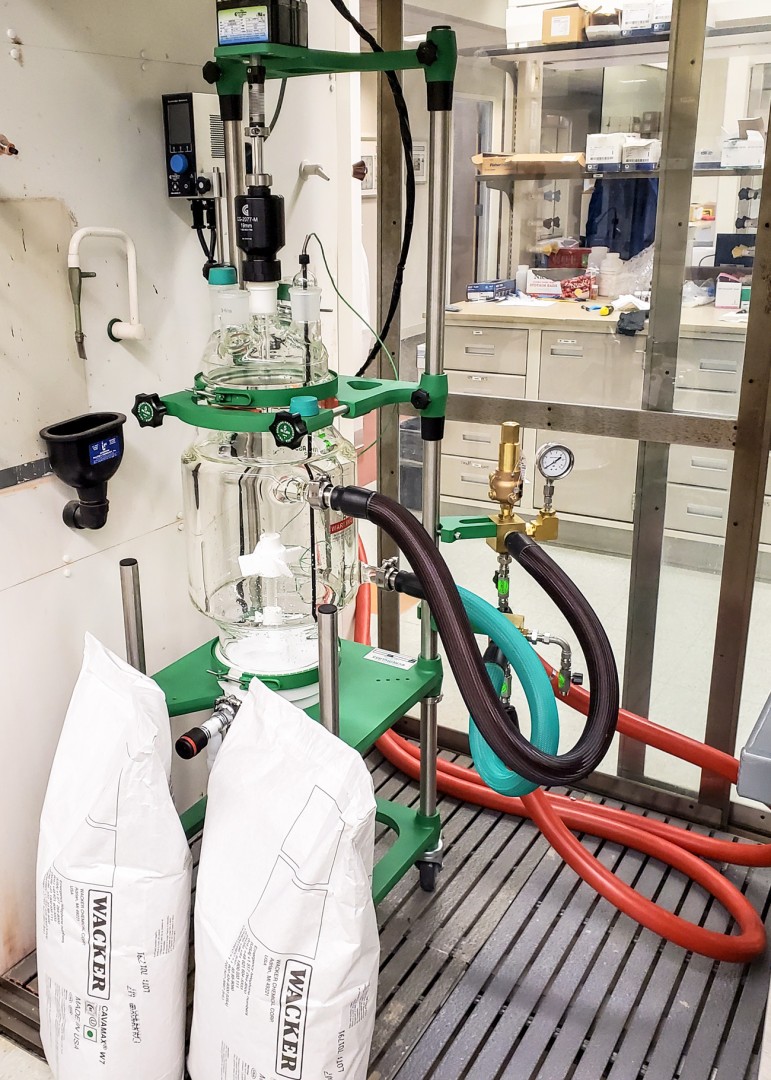
Through its collaboration with Cyclopure, WACKER is helping to make sure that drinking water is as pure as it looks.
Contact
For more information on this topic, please contact:
Mr. Mark Harrison
Global Business Development Manager
WACKER BIOSOLUTIONS
+1 517 264-8719
mark.harrison@wacker.com

